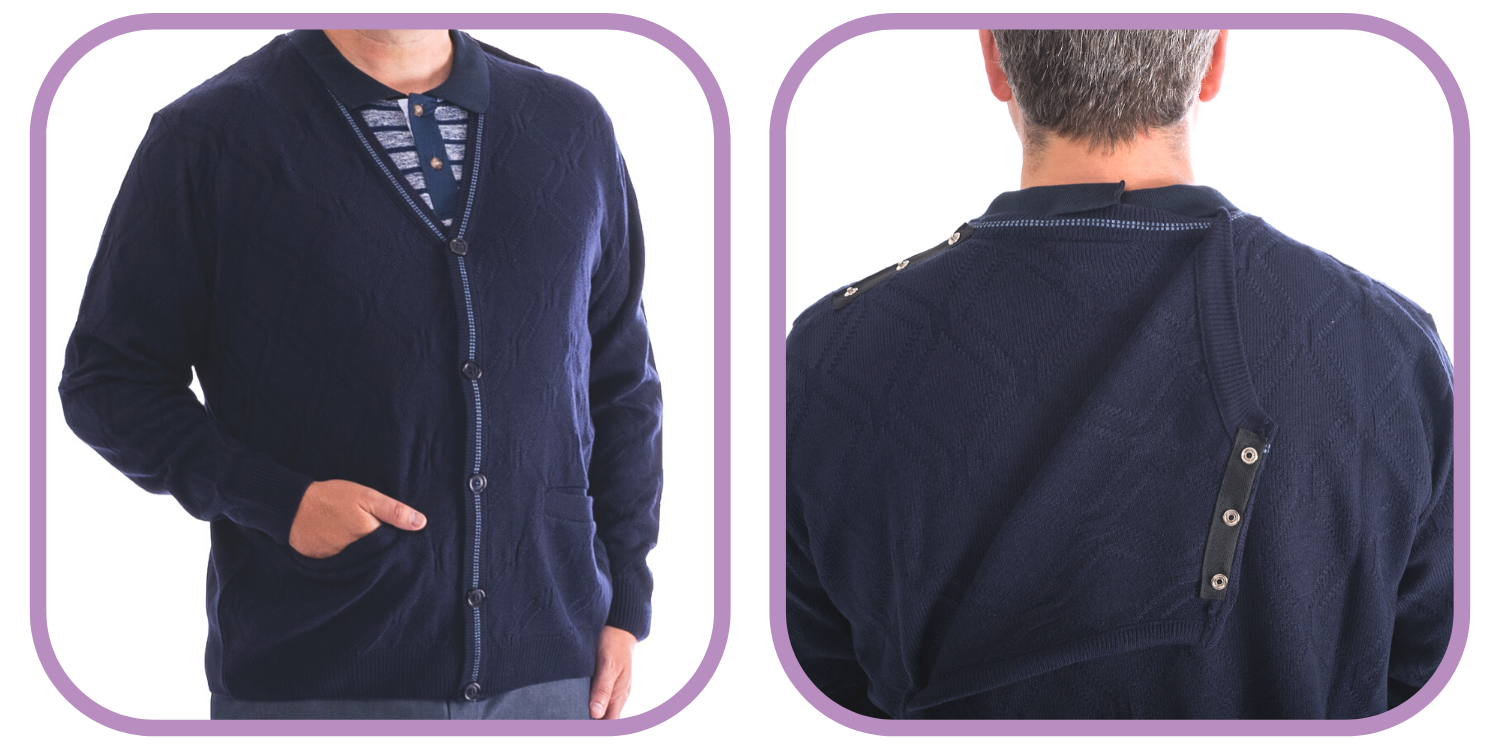 America's Largest Selection - Same Day Shipping if Ordered by Noon EST*
America's Largest Selection - Same Day Shipping if Ordered by Noon EST*
 Visit CA shop
Visit CA shop
Adaptive clothing is specially designed apparel intended to simplify the dressing process for individuals facing mobility challenges or health issues that make dressing a greater challenge. Various types of adaptive clothing have been developed to resemble traditional garments while providing extra comfort and advantages to both the individual and their caregiver.
Open-back tops are secured with snaps at the shoulder. The back of the garment can open completely, making it easy for individuals to get dressed or undressed without the need to lift their arms. This adaptive top is designed to offer full coverage and presents the appearance of a traditional top at first glance.
Shop Open Back Tops - Women's / Men's

Open-back tops are offered in a diverse range of styles, catering to both men and women. These styles encompass long sleeves, short sleeves, polo shirts, blouses, and cardigans. With this extensive array of options, there's something to suit everyone's preferences and needs. 

Open-back pants are adaptive garments designed with an open back. These pants are especially well-suited for individuals in wheelchairs or those who cannot comfortably wear traditional pants due to mobility constraints. They are also a practical choice for caregivers, as they enable individuals to be changed while either standing or lying down.
Open-back pants feature a back cutout design with generously sized modesty flaps to ensure coverage. Fastening is accomplished through three snaps located at the back of the pants, allowing for an adjustment of approximately 1.5 to 2 inches.
Shop Open Back Pants - Women's / Men's
What is the difference between open backed and seatless pants? This question frequently comes up among our Geri Fashions customers. The answer is quite simple: there is no actual difference between 'open-back' and 'seatless' pants.
Different adaptive clothing manufacturers may use varying terms for this style of adaptive pants, which is why you'll find products listed as both "open back" and "seatless" on our website. The design and functionality of these adaptive pants remain identical; they feature a back cutout with modesty flaps and fasten with snaps.
Our open-backed pants are available in various materials such as Gabardine, Mélange, Cozy Knit, Denim Look, and Twill. Please keep in mind that the material content may vary depending on the manufacturer. If you'd like to find out the specific material content of a particular item on our website, please don't hesitate to contact our customer care team for assistance.
The availability of the mentioned materials may vary since our inventory changes. For the most current availability, please visit our website or get in touch with our customer care team for further information.
Our adaptive tops, pants and accessories are constructed from highly durable materials. They have been specifically designed with long-term care and retirement homes in consideration, ensuring their suitability for machine washing and drying within facility laundry facilities.
Typically, these adaptive garments are crafted from a blend of polyester and acrylic. Some items may also incorporate elements of cotton, spandex, or rayon to enhance comfort and fit. Should you require details about the specific materials used in a particular item, please don't hesitate to reach out to our customer care team. It's important to note that material compositions may vary among manufacturers.
Just like with all adaptive clothing, selecting the right shirt size is crucial for both comfort and functionality. To ensure that you choose the correct size, please refer to our Geri Fashions Sizing Guide. You will need the individual's measurements to determine the right size. For men's shirts, you'll require the chest and neck measurements, while for women's shirts, the bust measurement is important. Additionally, having the individual's waist and/or hip measurements can be helpful when determining the appropriate size.

